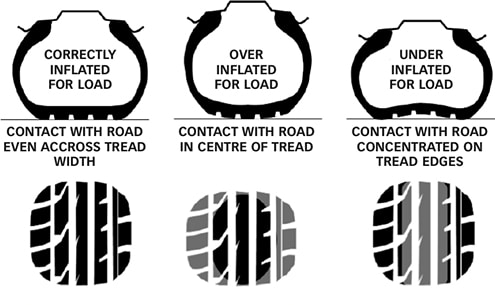The tire pressure warning light is a common sight for many vehicle owners. This light typically illuminates when there is a problem with the tire pressure, which can affect the vehicle’s handling and fuel efficiency. In this article, we will discuss what the tire pressure warning light means, and how to diagnose the problem using an on-board diagnostic (OBD) device.
The tire pressure warning light is typically illuminated when the tire pressure is below the recommended level, or when there is a problem with the tire pressure monitoring system (TPMS). The TPMS is a system that continuously monitors the pressure in the vehicle’s tires and alerts the driver when the pressure is too low. This is important because underinflated tires can cause poor handling, increased fuel consumption, and can even lead to a blowout.

When the tire pressure warning light illuminates, it is important to diagnose the problem as soon as possible. One way to do this is by using an OBD device. OBD devices are diagnostic tools that can be plugged into the vehicle’s OBD-II port, which is typically located under the dashboard. The device can then read diagnostic trouble codes (DTCs) that have been stored in the vehicle’s computer, which can indicate the cause of the tire pressure warning light.
Common causes of the tire pressure warning light include underinflated tires, a malfunctioning TPMS sensor, or a problem with the TPMS control module. Underinflated tires can be caused by a variety of factors, including leaks, temperature changes, or simply forgetting to check the pressure. A malfunctioning TPMS sensor can also cause the light to illuminate, and this can be caused by a variety of factors, including a dead battery, a problem with the sensor’s wiring, or a problem with the sensor itself. A problem with the TPMS control module can also cause the tire pressure warning light to illuminate, and this can be caused by a variety of factors, including a malfunctioning module or a problem with the module’s programming.
To diagnose the problem, an OBD device can be used to read the DTCs and troubleshoot the issue. The device can also be used to clear the DTCs and reset the system once the problem has been resolved.
In conclusion, the tire pressure warning light is a common sight for many vehicle owners. This light typically illuminates when there is a problem with the tire pressure, which can affect the vehicle’s handling and fuel efficiency. If the light illuminates, it is important to diagnose the problem as soon as possible, using an OBD device, to read the DTCs and troubleshoot the issue. Once the problem has been resolved, the device can also be used to clear the DTCs and reset the system. It’s also important to regularly check the tire pressure, to avoid these kinds of issues.

